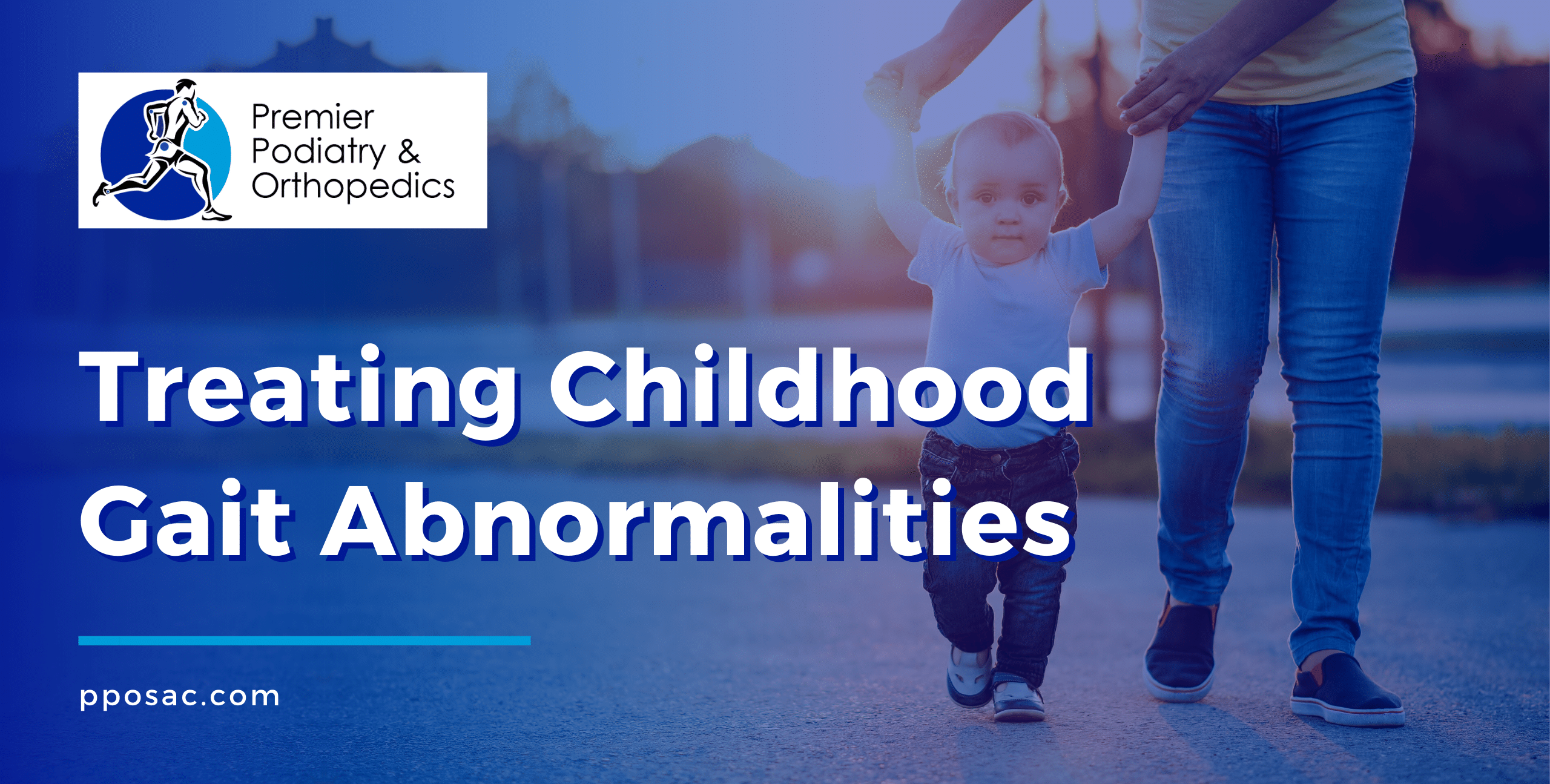What to Watch for After Your Baby Starts Walking
When you’re a new parent, the game changes once your little one starts to walk.
It certainly opens up many possibilities. Now you can walk with your child through the grass in Sacramento’s McKinley Park—or at least in your back yard until they’re ready. Of course, it opens up new worries about where your toddler might be toddling off to when you’re not looking!
But in addition to where your child might be walking, it is also important to be observant of how they’re walking.
Keeping an eye on your child’s gait as they grow can help identify potential issues that are worth monitoring. And you can count on our expert pediatric care to help kids throughout the Sacramento region reach adulthood with as few limits to their comfort and mobility as possible. Knowing what to watch for after your baby starts walking is very important.

Common Childhood Gait Abnormalities
As you watch your child take his or her first steps and ease into walking, you may notice some of the following behaviors or circumstances:
- In-toeing. Your child walks with toes pointed inward toward each other. You may have also heard this condition referred to as being “pigeon-toed.”
- Out-toeing. The opposite of in-toeing. Your child walks with toes pointed outward, away from each other.
- Toe-walking. Your child stands on tip-toes or the balls of the feet as they walk.
- Flat feet. The arches of your child’s feet don’t show, and most or the entirety of the arch presses against the floor while standing. Often, the condition is “flexible,” in that you do not see an arch as your child stands, but it becomes visible again once they sit or rise onto their toes.
We recommend notifying us if you are seeing any of these signs consistently in your child, but they are not always something you must be immediately concerned for your child’s health about.
Be Alert, Not Alarmed
While the conditions above warrant a closer examination, the good news is that many children grow out of them.
We are not born with the ability to walk right out of the gate. It takes time to develop muscles and motor skills, and it’s relatively common to see things like in-toeing, out-toeing, or toe walking during the learning process.
Similarly, we are not always born with fully developed arches, either. This is why you can see flexible flat feet during the formative walking years. Arches tend to more solidly form by the age of 5.
So while there is often no need for immediate alarm if you spot these conditions in your little one, it is still something that should be evaluated and monitored over time to ensure that:
- There is no underlying problem responsible for the abnormality.
- Your child is “growing out of” the condition as they should, and their development is continuing normally.
Sometimes, flat feet, in-toeing, or other conditions don’t go away as a child’s feet mature and reach a more “rigid” state. The sooner we determine whether such a problem is occurring, the sooner we can take steps to prevent or greatly limit the severity of the condition.

Treating Childhood Gait Abnormalities
When a gait problem is not showing signs of receding, we must first determine whether it is affecting your child in a negative way.
For example, a number of people end up having flat feet into adulthood, but it does not always cause them any discomfort or hinder their ability to move or run in any noticeable way. If there are no symptoms, further treatment may not be necessary.
But whenever there is pain, discomfort, impediment of mobility and other symptoms, they should always be addressed sooner than later. Conservative forms of treatment often yield substantial results, especially when started as early as possible. Aspects of a conservative treatment plan might include:
- The use of custom orthotics to shift excess weight and force away from overstressed areas.
- Stretches and exercises to better condition affected muscles, ligaments and other soft tissues.
- Changes in footwear.
- Use of braces or splints.
In uncommon cases, a condition may be so severe or progressed that surgery may be required. This is only considered when it is clear that conservative treatments will not have the effects we are looking for.
Should surgery be a consideration, we will fully discuss all the ins and outs of it with you and answer any questions you may have. It’s always important that we ensure you can make the most well-informed and confident decisions for your child’s treatment moving forward.
Walking Toward a Bright Future
You shouldn’t have to fret over every step your child takes during his or her formative years. By keeping a steady watch over things, however, we can catch potential worries early and ensure they don’t grow into something worse.
If you live in the greater Sacramento area and seeking foot and ankle help for your child (or anyone in your family, at that), give us a call at (916) 961-3434 to schedule an appointment at either of our offices in Carmichael or Roseville. If you prefer to reach out to us electronically instead, simply fill out our online contact form and a member of our staff will respond to you during our standard office hours.
Looking to schedule an appointment with a physician?
Carmichael Office
6620 Coyle Avenue,
Suite 202
Carmichael, CA 95608
Roseville Office
576 N Sunrise Avenue,
Suite 230
Roseville, CA 95661
Folsom Office
1580 Creekside Drive,
Suite 100 & 110
Folsom, CA 95630
Social
© Premier Podiatry & Orthopedics. All Rights Reserved. | Privacy Policy
